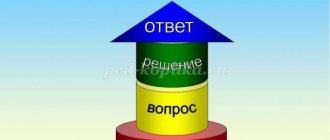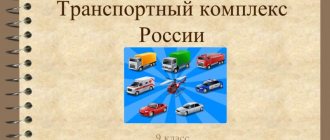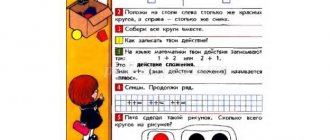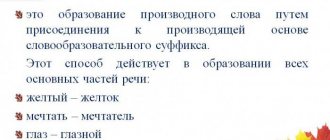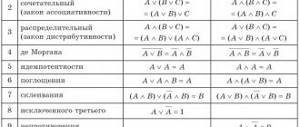Technological map of the lesson in 6th grade “Atmospheric pressure”
LESSON PLAN
Atmosphere pressure
- Artamonova Victoria Valeryanovna
- Municipal educational institution secondary school No. 36, Vladikavkaz, North Ossetia - Alania
- Geography teacher
- 6th grade
- Chapter “Atmosphere” lesson 42
- Textbook: Gerasimova T.P. Neklyukova N.P. Geography elementary course 6th grade.
Topic: Atmospheric pressure
Goals:
- To form an idea of atmospheric pressure, of the cause-and-effect relationship between the nature of the underlying surface, the temperature of the air above it, altitude above sea level and atmospheric pressure.
- Develop skills of working in pairs and groups. To develop the creative abilities of students, to independently overcome difficulties in learning, using problematic situations and creative tasks. Independent preparation of assignments. Expanding your horizons. Instilling skills of independent work when searching for the required material.
Educational objectives:
- Form an idea of atmospheric pressure: the value of normal atmospheric pressure, low and high atmospheric pressure.
- To develop knowledge about the cause-and-effect relationships between the nature of the underlying surface, the temperature of the air above it, altitude above sea level and atmospheric pressure.
- Continue the formation of general educational skills.
II. Developmental tasks:
- Develop memory, logical thinking, observation, skills to compare, generalize and draw conclusions based on newly studied material.
- To teach students to acquire knowledge collectively and in pairs.
- To develop cognitive interest, independent thinking, and a conscious attitude to the subject through the use of elements of problem-based learning.
- Create conditions for students to make “small discoveries.”
III. Educational tasks:
- Increase the activity of students to reveal their capabilities.
- Cultivate a caring attitude towards your own health.
Lesson type: learning new material. Geographical laboratory.
Equipment:
wall map of the Russian Federation, atlases for grade 6; textbook for 6th grade by T.P. Gerasimova and N.P. Neklyukova.
educational visual tables: aneroid barometer, mercury barometer and their structure; barometers (one per desk), a piece of cardboard, a newspaper and a ruler - for conducting the experiment;
plastic bottle with water, funnel, tray, leaf with mountains, compass, plasticine, watering can with water, napkins, basin, knife, bottle of shampoo, awl, pack of salt - for experiment, Portrait of Torricelli, A4 sheets (for all students)
Teaching methods:
Problem-based method, partially search.
Forms of organizing student activities:
- Intellectual – tasks of different levels of complexity, dialogical solution of assigned tasks;
- Social – work in pairs (blocks), mutual control;
- Emotional – creating a situation of success, creating a problem situation.
Table 1.
STRUCTURE AND PROGRESS OF THE LESSON
| № | Lesson stage | Name of EORs used (indicating the serial number from Table 2) | Teacher activities (indicating actions with ESM, for example, demonstration) | Student activity | Time (per minute) |
| 1 | 2 | 3 | 5 | 6 | 7 |
| Organizational moment | Greets students and checks how comfortable they feel | Adjusting to the business rhythm | 1 min | ||
| Update students' knowledge | Organizes work to reproduce in memory a system of supporting knowledge and skills for conscious perception of new knowledge | By talking through what is needed to solve the problem, they voice the goals of the lesson. | 1 min | ||
| Assimilation of new knowledge, initial consolidation of acquired knowledge, initial testing of understanding | (1) Atmosphere pressure Atmosphere pressure | Organizes work, conducts experiments Using information modules with interactive animations, gives tasks to groups | Observe experiments and answer questions. They work in groups. They study the electronic educational resources and answer questions. | 8 min | |
| Initial check of understanding | Asks questions, listens, corrects answers | They work in groups and summarize the work. | 3 min | ||
| Fizminutka | Presentation | Organizes exercises | Doing exercises | 2 minutes | |
| Assimilation of new knowledge, initial consolidation of acquired knowledge, initial testing of understanding | (2) Pressure measurement methods | Organizes work, conducts experiments Organizes the work of the group, gives it a special task Using information modules with interactive animations, gives tasks to groups | Observe experiments and answer questions They receive a task and leave to complete it. They work in groups. They study the electronic educational resources and answer questions. | 8 min | |
| Practical work | (3) Atmospheric pressure and methods for measuring it | Organizes work, conducts experiments Organizes work with the practical module | Observe experiments and answer questions Study electronic educational resources and answer questions | 5 minutes | |
| Summing up the group's work with an individual task | Asks questions, listens, corrects answers | Report of the group of "senior scientists" | 2 minutes | ||
| Consolidation of knowledge | (4) Atmosphere is the air envelope of the Earth. Atmosphere pressure. K1 (5) Atmosphere pressure | Organizes students' work | Solve problems | 7 min | |
| Homework | Communicates the goals, contents and methods of completing homework | Record homework | 2 minutes | ||
| Summarizing. Reflection | Suggests adding to the sentence: 1) I know what it is... 2) I can... 3) I learned... | Determine the level of achievement of their results. Answer teacher questions | 1 min |
Table 2.
LIST OF EOR USED IN THIS LESSON
| № | Resource name | Type, type of resource | Form for presenting information (illustration, presentation, video clips, test, model, etc.) | Hyperlink to a resource that provides access to the ESM |
| 1 | Atmosphere pressure | AND | Information modules with interactive animations | Atmosphere pressure Atmosphere pressure |
| 2 | Pressure measurement methods | AND | The information module is devoted to the topic “Methods of measuring pressure” for the basic level of primary school. In addition to illustrated hypertext materials, it includes an interactive model “Aneroid Barometer”. | Pressure measurement methods |
| 3 | P | The practical module includes 6 interactive tasks of various types with the possibility of automated testing to consolidate knowledge on the topic “Atmospheric pressure and methods of measuring it” in basic school. | Atmospheric pressure and methods for measuring it | |
| 4 | TO | This EUM contains test tasks on the topic “Atmospheric Pressure” | Atmosphere is the air envelope of the Earth. Atmosphere pressure. K1 | |
| 5 | TO | The test includes 6 interactive tasks of various types with the possibility of automated testing to control knowledge on the topic “Atmospheric pressure. | Atmosphere pressure |
During the classes
I. Organizational part of the lesson
- Mutual greeting.
— Checking students’ readiness for the lesson.
— Checking visual material and equipment.
II. Updating students' knowledge
Using the supporting plan diagram on the topic “Atmosphere” and the drawing “Structure of the Atmosphere”, students answer questions posed by the teacher and allow students to update the knowledge acquired in previous lessons:
— What topic are we studying?
- What is the atmosphere?
— What weather characteristics do we give? What does t air depend on?
— Describe the weather for April 9, 2012; 04/10/2012, draw conclusions about the weather.
— Build a chain of cause-and-effect relationships using cards:
III. Assimilation of new knowledge, initial consolidation of acquired knowledge, initial testing of understanding.
3.1.1. Communicate the topic, purpose, and lesson plan.
Hello guys. Over the course of many lessons, you have been studying the structure of our planet and have achieved excellent results. Today I invite you to continue studying the earth in the geography laboratory that our class will turn into. I am the head of the laboratory. You are my future employees. Do you agree?
The atmosphere holds many secrets and mysteries; many interesting stories are associated with it.
For example, this one. It was back in the 17th century, Rene Descartes fell into the hands of an old silver perfume bottle, perforated by the tip of a sword. He noticed that the perfume in a bottle with a hole in it, closed with a stopper, did not flow out, but as soon as the stopper was removed, the liquid poured out. What is the reason for this?
Recently a similar story happened to me.
I propose a similar situation (with shampoo)
- What prevents shampoo from leaking out of a punctured bottle?
Help me figure out this kind of magic (ruler and newspaper).
Experiment: we place the ruler on the edge of the table so that part of it does not lie on the table. I invite the student to tap the edge of the ruler. Naturally, the line “flies away”. I cover part of the ruler lying on the table with newspaper. Again I invite the student to hit with the same force.
- What prevents the ruler from flying far?
What do all these experiments have in common?
(Atmosphere pressure
)
Let's do the following experiment
Take a bowl (preferably transparent), a cork (natural), and a transparent glass.
Pour half a bowl of water and throw a stopper into the water. Cover the floating cork with a glass and immerse the glass deep in the water.
- What are we observing? (The area of the water surface on which the cork floats sinks along with the glass.)
- Why? (The air in the glass prevents water from filling the glass, and therefore the water, along with the floating stopper, sinks)
Like any laboratory, we will work according to plan:
- What is atmospheric pressure?
- How is atmospheric pressure measured?
- How does atmospheric pressure change with altitude?
- How does atmospheric pressure change depending on the heating of the earth's underlying surface?
To work and answer questions, you need to unite in 5 groups of meteorological forecasters. These words come from Greek words and have the following interpretations: “Meteora” - atmospheric phenomena; “Weather forecaster” - capable of observing everything.
The first group prepares an answer to the question: What is atmospheric pressure?
The second group is preparing an answer to the question: Who invented the device for measuring atmospheric pressure and its design?
The third group answers the question: How is atmospheric pressure measured?
The fourth group answers the question: How does atmospheric pressure change with altitude?
The fifth group answers the question: How does atmospheric pressure change due to heating of the underlying surface?
To work in groups you need to study the ESM Atmospheric Pressure
Summing up the primary results after studying the ESM
We are convinced that atmospheric pressure exists.
Let's try to write down the definition - AD (the force with which pressure presses on the earth's surface and on all objects located on it)
Dear laboratory staff, extend your hand. Do you feel blood pressure? Why don't we feel blood pressure? After all, the air presses on a person with very great force (Put a pack of salt on a student’s hand - with such force the air presses on 1 cm of the surface)
Right. Air presses from all sides, there is pressure inside a person, and there is a balance between blood pressure and the pressure of liquid and air inside our body. If this balance is disturbed, then the person’s well-being changes.
A group of two people goes off on a special mission
Instructions:
1. Go to the top floor of the school. Determine the atmospheric pressure in mmHg (millimeters of mercury) using the scale at the top of the barometer and write it down in your notebook.
2. Go down to the bottom floor of the school. Measure the barometric pressure a second time. Has the atmospheric pressure changed? Try to explain why.
Be very careful! Any (even very small) deviation of the arrow matters!
Practical work – 5 minutes
1.So, what are the results of your work, what happened? (determined using a blood pressure barometer) Write it on the board.
2. Experiment with a bottle and water - conducted by the teacher
Practical work: determining the dependence of atmospheric pressure on the altitude of the area.
1. Using an atlas, determine the height of Chomolungma (Everest) and Elbrus. Label the height of these mountains in the picture (on a plastic bottle).
2. Using a compass, make 2 holes on the side of the bottle so that they are located one above the other and correspond to each of the mountain peaks.
3. Before filling the bottle with water, cover the holes with plasticine.
4. Place the bottle on the tray. Using a funnel, fill it with water from a watering can. Carefully scrape off the plasticine. Look what happened.
5.Which fountain flows next? Why?
Write down the conclusion: the ____________ terrain, the ______________ blood pressure.
(We see that the upper fountain does not shoot as far as the others. The guys explain that this happens because the water pressure at the top is less than at the bottom. In the same way, the atmospheric pressure is lower at the top of a mountain than at its foot).
We conclude: the _________ the area, the __________ blood pressure.
I add: it has been determined that when climbing mountains, for every 10.5 m of altitude, blood pressure decreases by 1 mm Hg (write it down)
Working with EOR Atmospheric pressure and methods for measuring it
3. Report of the group of “senior scientists”
What are the results of your experience? (BP did not change, the arrow deviated quite a bit towards decreasing BP on the upper floor)
Dear employees, how can this be explained? (the height of the school is less than 10.5 m) We found out one reason for the change in blood pressure - change with height
Determine the second reason for the change in blood pressure by thinking about the situation.
Situation: a balloon is filled with warm air for flight. Why not cold? (warm air is lighter than cold air)
Conclusion: (write on the board and in a notebook) the warmer the air, the lower the blood pressure
Let's summarize: what reasons does blood pressure depend on?
Let's summarize our work
Working with dough
Atmosphere pressure
Let us summarize the work of our laboratory.
What have we learned today, what discoveries have we made?
Well done! I'm happy with you! Did you like being a member of the geographic laboratory?
The laboratory continues to work.
At home - study paragraph 38, continue monitoring your blood pressure according to the form given to you. Our goal is to confirm the connection between blood pressure and the weather in our area.
| 10.04 | 11.04 | 12.04 | 13.04 | 14.04 | 15.04 | 16.04 |
| Atmosphere pressure | ||||||
| Cloudiness (clear, cloudy) | ||||||
| Precipitation (snow, fog, rain, frost) |
A possible question: why do we consider the “walks” of climbers almost a feat, although we ourselves cover more distances every day than they do in a week?
Homework. Weather observation.
